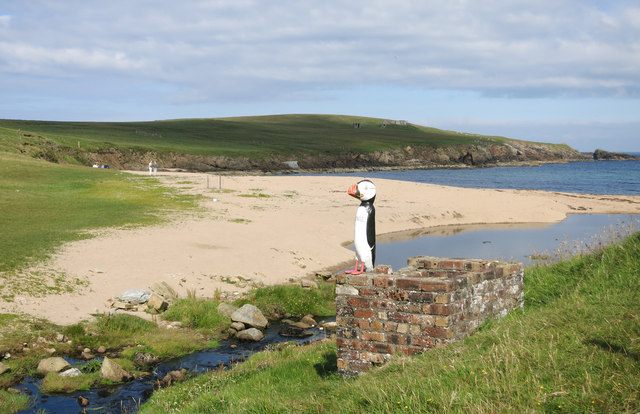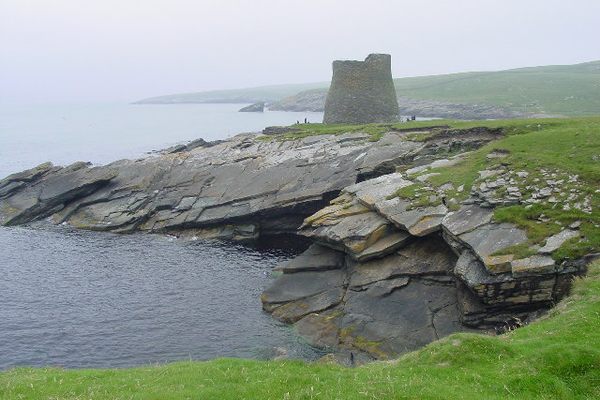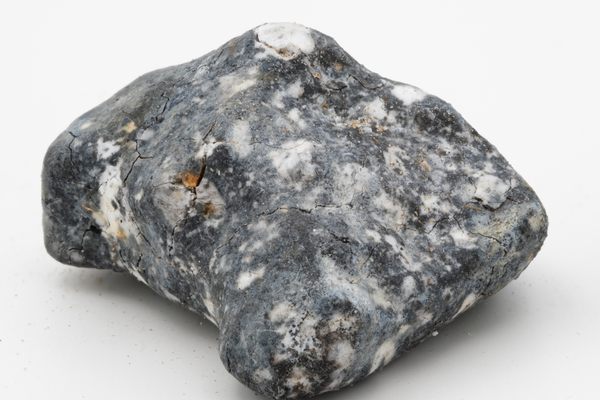A Remote Shetland Island Could Become a Spaceport
Unst’s isolation is an asset for satellite launches. And it has a radar station.

Unst, the northernmost of Shetland’s inhabited islands, measures 12 miles by 5 miles, has a population of approximately 600 people, and hosts a wealth of seabirds, a yearly fire festival, and the very occasional beatboxer. It is also, according to a new report funded in part by Scotland’s economic development agency, Britain’s best option for a spaceport site, The Shetland Times reports.
Unst is far north mostly in the context of Britain—Iceland, the Faroe Islands, and large parts of Scandinavia are notably closer to the North Pole. But Unst makes the most of its remote location, calling itself the “island above all others.” Once inhabited by Norse settlers, it now boasts Britain’s most northerly hotel, which is just north of the 60th parallel, and a bus shelter equipped with a microwave, carpeting, and a sofa. It also has the U.K.’s most northerly brewery, Valhalla Brewery, and Shetland’s only chocolatier.

Unst’s history already includes an aerospace legacy. During World War II, the British military opened two radar sites on the island, intended to provide information about the airspace north of Scotland. One of the sites, Saxa Vord, built on the island’s highest point, was judged to be a “probable nuclear target” throughout the 1970s. The radar station there closed in 2006, and the aforementioned brewery and chocolatier, along with a cycle hire, moved into the former military site.
This same site, though, could be reborn as a launch pad for satellites. As The Guardian reports, of all the possible sites for a spaceport in Britain, Unst poses the “lowest risk to inhabitants if the spacecraft failed and crashed back to earth,” since it’s “so far north that rockets lifting off from the island could fly straight into orbit without passing over populated areas.”
When heading into orbit, spacecraft must minimize the risk of death and destruction by avoiding populated areas of the globe. That’s why launch sites tend to be built on coasts or isolated deserts. Because it’s near water and not near many people at all, Unst fits that criteria well.

There is some advantage to situating a spaceport closer to the equator, though. When launching into orbit, a spacecraft begins with the speed of the Earth’s rotation—we’re all already moving at some rotational speed. Because a point on the the fatter part of the globe has to move farther in 24 hours to make an entire rotation, points towards the equator actually are moving faster that points closer to the poles. Launching a spacecraft into orbit means benefitting from that extra boost. It’s a big enough difference that it can save significant amounts of fuel.
But not all spacecraft are being launched into the same type of orbit. Any spaceport located in the U.K. would not benefit from that equatorial boost and would specialize in polar orbits, in which spacecraft travel about perpendicular to the equator, traveling over both poles at least once a day, and sun-synchronous orbits. A sun-synchronous orbit means that the spacecraft spends its whole life looking down at parts of the Earth bathed in sunlight—an advantage for satellites that are meant to be taking pictures of the ground.
There are dozens of spaceports in the world today, and the business of space is only growing. A few weeks ago the current owner of the Saxa Vord site, Frank Strang, opened a company called Shetland Space Centre Ltd, with the hopes that one day soon the Shetlands will have a growing space industry. The radar site at Saxa Vord is being reactivated, too, which gives Unst another advantage among spaceport competitors. In the future, visitors to this remote Shetland Island may have the chance to view both puffins and the launch of a satellite into space.












Follow us on Twitter to get the latest on the world's hidden wonders.
Like us on Facebook to get the latest on the world's hidden wonders.
Follow us on Twitter Like us on Facebook